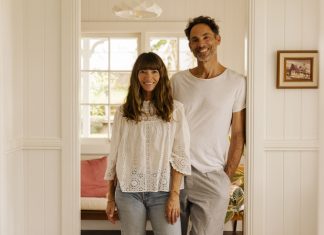Thousands of kids are hospitalised unnecessarily every year for oral health conditions that are entirely preventable – and the Australian Dental Association says the trend is getting worse.
About 1500 are left waiting in pain for treatment each year due to insufficient theatre space, according to the ADA.
The association released new data from its Oral Health Tracker to mark World Oral Health Day on 20 March.
Almost 11 in every 1000 children aged 5 to 9 years were admitted to Australian hospitals for preventable dental conditions in 2021-2022, compared to 9.5 per 1000 in 2018.
In Indigenous children, this number is 14 in every 1000, compared to 11.5 in 2018.
“That’s thousands of children being hospitalised for preventable oral issues every year,” ADA president Dr Scott Davis said.
“It’s hard to believe in a first world country like Australia, with most people having access to fluoridated water, healthy food and the tools for keeping mouths clean and decay-free, that this is still happening – but it is.
“There are complex reasons for this.
“Cost is always an issue and this continued trend of children needing to go to hospital to get their oral health problems fixed indicates that we have a significant problem today and for the future.
“Every state and territory provides free dental care for eligible children so they can see a private or public dentist under the Child Dental Benefits Schedule – but there needs to be considerably more effective, targeted publicity of the scheme.
“It’s currently only used by 38 percent of eligible families.”
High rates of dental decay also play a big part in this issue, with nearly three in four (70 percent) kids aged 9 to 13 and a similar number (73 percent) of young people aged 14 to 18 having too much sugar.
Sugary drinks are the main culprit – 37 percent of kids have two to five drinks of fruit juice a week, and the same number have two to five soft drinks a week.
Infants and children sometimes need a general anaesthetic (GA) for dental work, but the ADA said a flawed funding model prevented them from having the surgery they urgently needed.
“The current hospital funding model means dental cases are less lucrative for private hospitals than other types of operations like cataracts and grommets, so access to surgery theatre time
for dental procedures has been slashed,” Dr Davis said.
“The result is infants and children are having their operations postponed or cancelled and they’re waiting a long time, often in considerable pain or on pain relief, before their problem is fixed under GA.
“The funding model for theatre lists needs to be overhauled and while the Independent Health and Aged Care Pricing Authority is currently reviewing the model, it won’t be completed until the middle of 2025, which fails to address the urgency of reduced paediatric theatre space.”
Dr Nicky Kilpatrick, president of the Australasian Academy of Paediatric Dentistry, said some academy members had lost up to 60 percent of their access to hospital theatre space.
“There’s a severe reduction in access to hospital theatre space across both public and private hospitals, resulting in very delayed care for private paediatric patients and a blowout in the already years-long paediatric dental waiting lists in public hospitals,” she said.
“In the meantime, these patients are in pain, not sleeping, and potentially risking facial infection and swelling which can be a medical emergency.
“The problem is the way the system works.
“Dental procedures under general anaesthesia can only access one poorly rebated code irrespective of how much or how complex the treatment required.
“This results in paediatric dental lists being less profitable than other medical procedures which attract more codes, and in some cases the paediatric dental lists run at a loss because the hospital gets the same rebate whether we restore one tooth or 10.
“This is what needs fixing.
“No one knows the extent of the problem but data collected from our members suggest that across Australia, in excess of 1500 less children are able to access dental treatment per year now compared with four years ago.
“That’s a lot of children suffering needlessly, and it’s getting worse.”








